FJRI's Recommended Reading List
Books
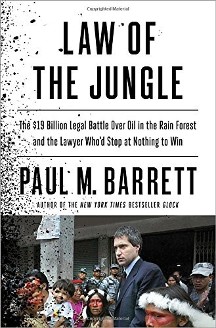
Barrett, Paul, Law of the Jungle: The $19 Billion Legal Battle Over Oil in the Rain Forest and the Lawyer Who'd Stop at Nothing to Win. New York, Crown Publishers, 2014.
The gripping story of one American lawyer’s obsessive crusade—waged at any cost—against Big Oil on behalf of the poor farmers and indigenous tribes of the Amazon rainforest.
Steven Donziger, a self-styled social activist and Harvard educated lawyer, signed on to a budding class action lawsuit against multinational Texaco (which later merged with Chevron to become the third-largest corporation in America). The suit sought reparations for the Ecuadorian peasants and tribes people whose lives were affected by decades of oil production near their villages and fields. During twenty years of legal hostilities in federal courts in Manhattan and remote provincial tribunals in the Ecuadorian jungle, Donziger and Chevron’s lawyers followed fierce no-holds-barred rules. Donziger, a larger-than-life, loud-mouthed showman, proved himself a master orchestrator of the media, Hollywood, and public opinion. He cajoled and coerced Ecuadorian judges on the theory that his noble ends justified any means of persuasion. And in the end, he won an unlikely victory, a $19 billion judgment against Chevon--the biggest environmental damages award in history. But the company refused to surrender or compromise. Instead, Chevron targeted Donziger personally, and its counter-attack revealed damning evidence of his politicking and manipulation of evidence. Suddenly the verdict, and decades of Donziger’s single-minded pursuit of the case, began to unravel.
Written with the texture and flair of the best narrative nonfiction, Law of the Jungle is an unputdownable story in which there are countless victims, a vast region of ruined rivers and polluted rainforest, but very few heroes.
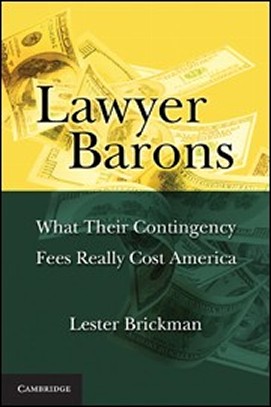
Brickman, Lester, Lawyer Barons: What Their Contingency Fees Really Cost America. New York, Cambridge University Press, 2011.
This book is a broad and deep inquiry into how contingency fees distort our civil justice system, influence our political systemand endanger democratic governance. Contingency fees are the way personal injury lawyers finance access to the courts for those wrongfully injured. Although the public senses that lawyers manipulate the justice system to serve their own ends, few are aware of the high costs that come with contingency fees. This book sets out to change that, providing a window into the seamy underworld of contingency fees that the bar and the courts not only tolerate but even protect and nurture. Contrary to a broad academic consensus, the book argues that the financial incentives for lawyers to litigate are so inordinately high that they perversely impact our civil justice system and impose other unconscionable costs. It thus presents the intellectual architecture that underpins all tort reform efforts.
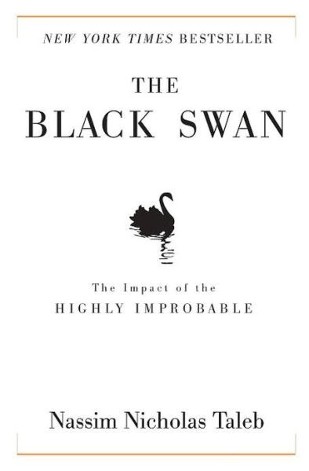
Taleb, Nassim Nicholas, The Black Swan: The Impact of the Highly Improbable, New York, Random House, 2007.
A black swan is a highly improbable event with three principal characteristics: It is unpredictable; it carries a massive impact; and, after the fact, we concoct an explanation that makes it appear less random, and more predictable, than it was. The astonishing success of Google was a black swan; so was 9/11. For Nassim Nicholas Taleb, black swans underlie almost everything about our world, from the rise of religions to events in our own personal lives.
Why do we not acknowledge the phenomenon of black swans until after they occur? Part of the answer, according to Taleb, is that humans are hardwired to learn specifics when they should be focused on generalities. We concentrate on things we already know and time and time again fail to take into consideration what we don't know. We are, therefore, unable to truly estimate opportunities, too vulnerable to the impulse to simplify, narrate, and categorize, and not open enough to rewarding those who can imagine the "impossible."
For years, Taleb has studied how we fool ourselves into thinking we know more than we actually do. We restrict our thinking to the irrelevant and inconsequential, while large events continue to surprise us and shape our world. Now, in this revelatory book, Taleb explains everything we know about what we don't know. He offers surprisingly simple tricks for dealing with black swans and benefiting from them.
Elegant, startling, and universal in its applications The Black Swan will change the way you look at the world. Taleb is a vastly entertaining writer, with wit, irreverence, and unusual stories to tell. He has a polymathic command of subjects ranging from cognitive science to business to probability theory. The Black Swan is a landmark book -- itself a black swan.
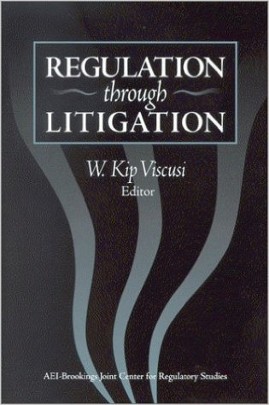
Viscusi, W. Kip, Regulation through Litigation, Washington, D.C.: AEI-Brookings Joint Center for Regulatory Studies, 2002.
This volume explores a new phenonmenon that links law and regulation. It reviews a recent class of litigation involving guns, tobacco, and other products in which the stakes have become huge, running into hundreds of billions of dollars in the case of tobacco. The large scale of the litigation allowed litigants to use their financial leverage to force changes of a policy nature, including regulatory policies and excise taxes.
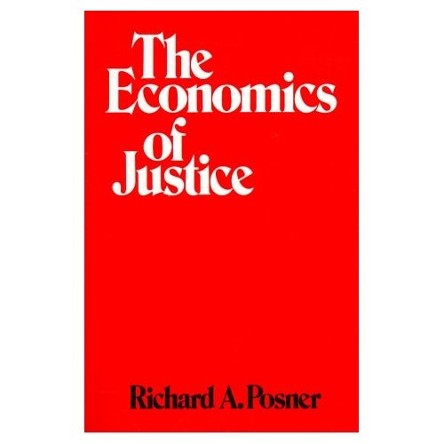
Posner, Richard, The Economics of Justice, Cambridge, Massachusetts: Harvard University Press, 1981.
The book is designed to display the power of economics to organize and illuminate diverse fields in the study of non market behavior and institutions. A central theme is the importance of uncertainty to an understanding of social and legal institutions. Another major theme is that the logic of the law, in many ways but not all, appears to be an economic one: that judges, for example, in interpreting the common law, act as if they were trying to maximize economic welfare.
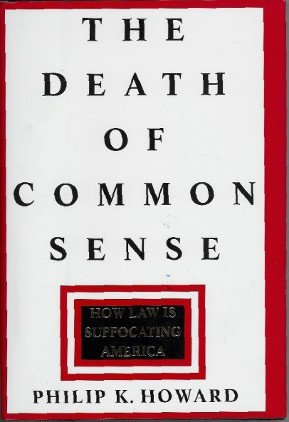
Howard, Philip K., Death of Common Sense : How Law is Suffocating America, New York, New York: Warner Books, Incorporated, 1996.
Distressing, disturbing, devastatingly detailed--this stunning examination of how modern laws are diminishing America exposes the drawbacks of rule-bound government, tells why nothing gets done, reveals the phony pretensions of law, and shows why well-intentioned laws have actually devalued rights. In short, The Death of Common Sense demonstrates how the buck never stops and how well-meaning laws are creating a nation of enemies.
Coleman, Jules L., The Structure of Tort Law, New Haven, Connecticut: Yale Law Journal, 1988.
Hagen, Margaret, Whores of the Court: The Fraud of Psychiatric Testimony and the Rape of American Justice, New York, New York: HarperCollins Publishing, 1997.
Lawyers often refer to them as "prostitutes" or "whores." They are the growing ranks of clinical psychiatrists, psychologists, social workers, and other mental health professionals who give expert testimony in our courtrooms today. And in far too many cases their testimony - on subjects as varied as determination of competency, dangerousness, parental fitness, custody, personal injury, memory, sentencing, and rehabilitation - helps determine the final verdict. Now, in this provocative and well-researched book, Margaret Hagen, Ph.D., reveals how expert psychological testimony is a total fraud, showing how the courts have increasingly embraced not a cutting-edge science but, instead, a discipline that represents a terrifying retreat into fantasy and hearsay; a discipline propelled by powerful propaganda, arrogance, and greed. There are now thousands of self-styled soul doctors running amok in our courts, bedazzled by spectacular fees and wielding unchecked power and influence in the courtroom.
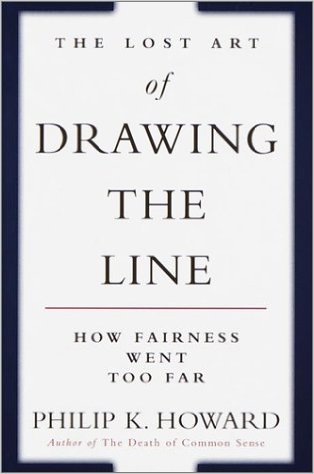
Howard, Philip K., The Lost Art of Drawing the Line : How Fairness Went Too Far, New York, New York: Random House Publishing, 2001.
Howard explains how contemporary society erodes individual freedom and self-worth. He argues that efforts to protect individuals against authority have led, ironically, to decline in our freedom and the quality of our lives. As evidence, he points to thousands of playgrounds across America that lack seesaws because school boards fear liability suits. Contending that society must operate with risk, Howard asserts that no body of law can transform a community into a logical machine.
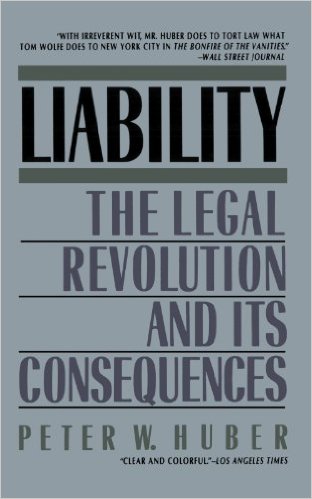
Huber, Peter W., Liability: The Legal Revolution and Its Consequences,USA: Perseus Publishing, 1990.
Traces the intellectual history of the transformation of products liability law over the last half-century and critiques the workings of the current doctrines in the area.
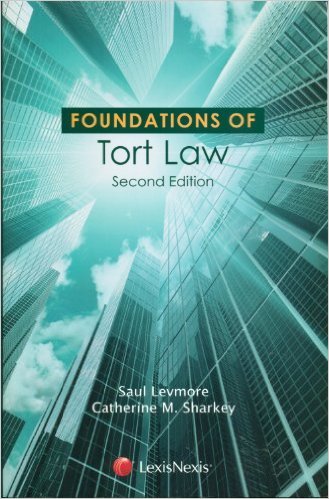
Levmore, Saul, Foundations of Tort Law, New York, Foundation Press, 1994.
This updated edition is a valuable resource for torts professors teaching at all levels of instruction. It provides an enhanced theoretical and empirical foundation for a diverse selection of fundamental torts topics typically taught at the introductory level, such as the Hand formula, duty to rescue, market-share liability, and vicarious liability, while, at the same time, providing an in-depth exploration of cutting edge issues suitable for an advanced course or seminar, such as medical malpractice, products liability, federal preemption of state tort law, and punitive damages.
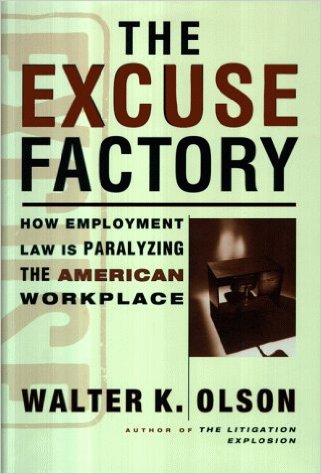
Olson, Walter K., The Excuse Factory, New York, New York: Simon & Schuster, 1997.
The Excuse Factory goes right to the heart of the increasingly absurd American workplace, showing how Kafkaesque employment laws make it nearly impossible to fire even the most incompetent and unmotivated workers. Employers have become understandably nervous about firing someone lest it open them up to a lawsuit, no matter how frivolous.
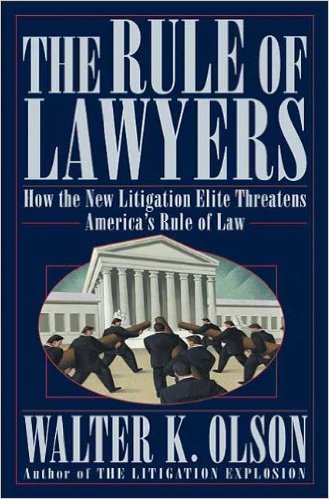
Olson, Walter K., The Rule of Lawyers: How the New Litigation Elite Threatens America's Rule of Law, New York, New York: St. Martin's Press, 2003.
The target of Olson's polemic is the use of class actions by a coterie of private lawyers who extract enormous verdicts and settlements from lawsuits against producers of tobacco, asbestos, automobiles, pharmaceuticals and the like. According to Olson, trial lawyers subvert democracy by using courtroom procedures to obtain reforms, such as regulating guns, which the American left has not been able to achieve in the federal or state legislatures. The lawyers distort public opinion, buy influence with judges through campaign contributions, introduce junk science into evidence and manipulate juries through unworthy courtroom theatrics. The class-action lawyers, Olson contends, garner stupendous fees for themselves, often produce minuscule payments to their clients and drive entire segments of business into bankruptcy.
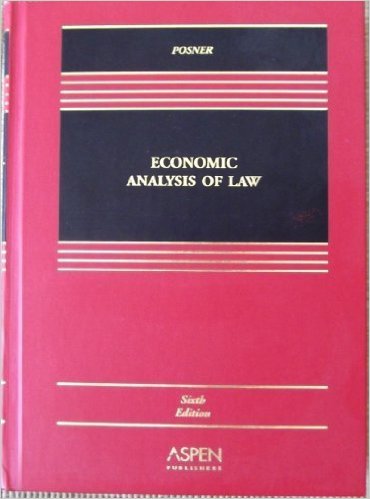
Posner, Richard, Economic Analysis of Law, Sixth Edition, New York: Aspen Publishers, Inc., 2002.
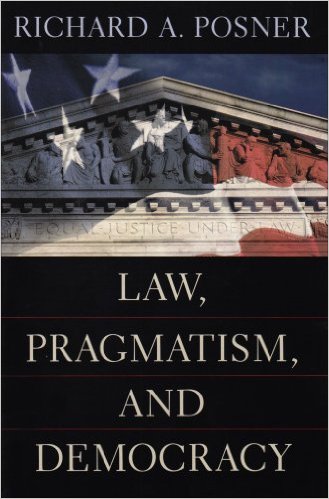
Posner, Richard, Law, Pragmatism, and Democracy, Cambridge, Massachusetts: Harvard University Press, 2003.
Posner argues that democracy is best viewed as a competition for power by means of regular elections. Citizens should not be expected to play a significant role in making complex public policy regarding, say, taxes or missile defense. The great advantage of democracy is not that it is the rule of the wise or the good but that it enables stability and orderly succession in government and limits the tendency of rulers to enrich or empower themselves to the disadvantage of the public. Posner's theory steers between political theorists' concept of deliberative democracy on the left and economists' public-choice theory on the right. It makes a significant contribution to the theory of democracy--and to the theory of law as well, by showing that the principles that inform Schumpeterian democratic theory also inform the theory and practice of adjudication. The book argues for law and democracy as twin halves of a pragmatic theory of American government.
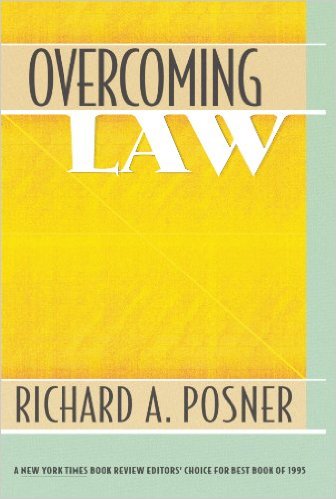
Posner, Richard, Overcoming Law, Cambridge, Massachusetts: Harvard University Press, 1995.
The topics covered include the structure and behavior of the legal profession; constitutional theory; gender, sex, and race theories; interdisciplinary approaches to law; the nature of legal reasoning; and legal pragmatism.
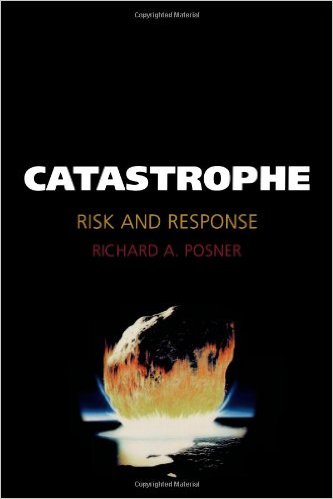
Posner, Richard, Catastrophe: Risk and Response, Oxford University Press, USA; New Ed edition, 2005.
Catastrophic risks are much greater than is commonly appreciated. Collision with an asteroid, runaway global warming, voraciously replicating nanomachines, a pandemic of gene-spliced smallpox launched by bioterrorists, and a world-ending accident in a high-energy particle accelerator, are among the possible extinction events that are sufficiently likely to warrant careful study. How should we respond to events that, for a variety of psychological and cultural reasons, we find it hard to wrap our minds around? Posner argues that realism about science and scientists, innovative applications of cost-benefit analysis, a scientifically literate legal profession, unprecedented international cooperation, and a pragmatic attitude toward civil liberties are among the keys to coping effectively with the catastrophic risks.
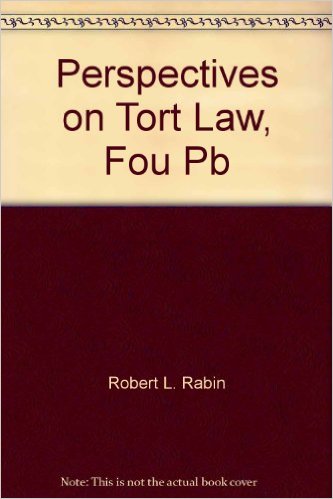
Rabin, Robert L., Perspectives on Tort Law, Fourth Edition: Little, Brown & Company, 1995.
With Robert Rabin Perspectives on Tort Law, students will gain a thorough understanding of the relevant legal principles; case by case, issue by issue. Presenting the text as an exploration of the ideological roots of tort law, the material can be used as either a supplementary volume in an introductory course or as the primary text in an advanced course or seminar. Look for this text to include: written over the past century by tort scholars Oliver Wendell Holmes, Charles Gregory, James Henderson, and others on the development and rationale of the United States tort system; Extensive coverage of consideration of liability for unintentional harm, along with additional coverage of negligence, strict liability, no-fault compensation systems, and references to foreign systems.
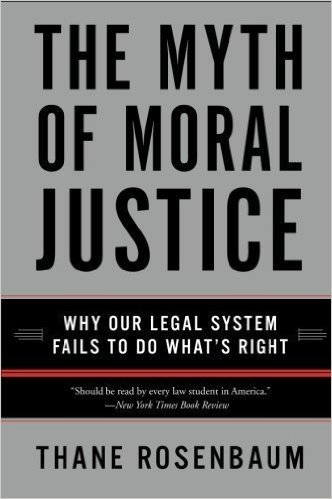
Rosenbaum, Thane, The Myth of Moral Justice, First Edition, New York, New York: HarperCollins Publishing, 2004.
With a lawyer's expertise and a novelist's sensibility, Rosenbaum tackles complicated philosophical questions about our longing for moral justice. He also takes a critical look at what our legal system does to the spirits of those who must come before the law, along with those who practice within it. Rosenbaum reinforces his themes with artistic representations of lawyers and legal systems from the classic works of Shakespeare, Charles Dickens, and Franz Kafka, along with various important feature films that illuminate why our legal system fails to do what's right.
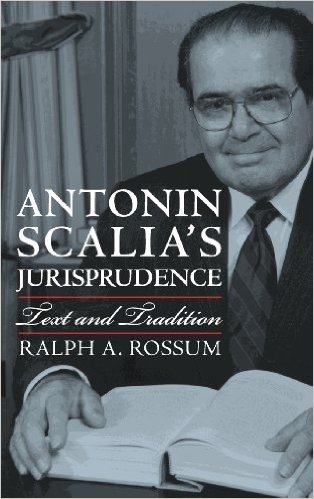
Rossum, Ralph A., Antonin Scalina's Jurisprudence - Text and Tradition, Lawrence, Kansas: University Press of Kansas, 2006.
This book is the first comprehensive, reasoned, and sympathetic analysis of how Scalia has decided cases during his entire twenty-year Supreme Court tenure. Ralph Rossum focuses on Scalia's more than 600 Supreme Court opinions and dissents-carefully wrought, passionately argued, and filled with well-turned phrases-which portray him as an eloquent defender of an "original meaning" jurisprudence.
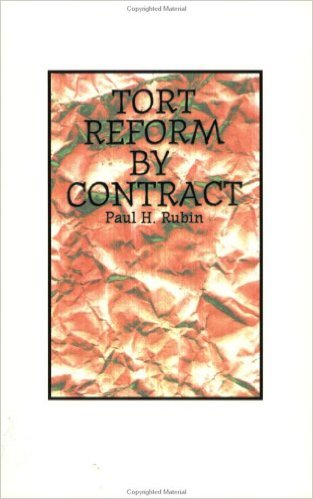
Rubin, Paul H., Tort Reform by Contract, Washington, D.C.: American Enterprise Institute for Public Policy Research, 1993
Makes the case that buyers and sellers should be permitted "to specify contractually the level or type of damages that will be paid if any accident occurs." Argues that both buyers and sellers have an incentive to agree to reduce the size of possible damage payments, and that such contracts would solve many of the problems now ascribed to the tort system.
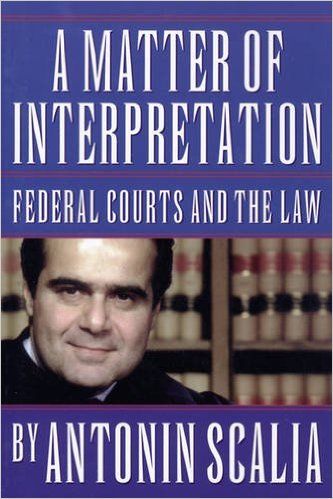
Scalia, Antonin, A Matter of Interpretation: Federal Courts and the Law, Princeton, New Jersey: Princeton University Press, 1997.
We are all familiar with the image of the immensely clever judge who discerns the best rule of common law for the case at hand. According to U.S. Supreme Court Justice Antonin Scalia, a judge like this can maneuver through earlier cases to achieve the desired aim--"distinguishing one prior case on his left, straight-arming another one on his right, high-stepping away from another precedent about to tackle him from the rear, until (bravo!) he reaches the goal--good law." But is this common-law mindset, which is appropriate in its place, suitable also in statutory and constitutional interpretation? In a witty and trenchant essay, Justice Scalia answers this question with a resounding negative.
In exploring the neglected art of statutory interpretation, Scalia urges that judges resist the temptation to use legislative intention and legislative history. In his view, it is incompatible with democratic government to allow the meaning of a statute to be determined by what the judges think the lawgivers meant rather than by what the legislature actually promulgated. Eschewing the judicial lawmaking that is the essence of common law, judges should interpret statutes and regulations by focusing on the text itself. Scalia then extends this principle to constitutional law. He proposes that we abandon the notion of an everchanging Constitution and pay attention to the Constitution's original meaning. Although not subscribing to the "strict constructionism" that would prevent applying the Constitution to modern circumstances, Scalia emphatically rejects the idea that judges can properly "smuggle" in new rights or deny old rights by using the Due Process Clause, for instance. In fact, such judicial discretion might lead to the destruction of the Bill of Rights if a majority of the judges ever wished to reach that most undesirable of goals.
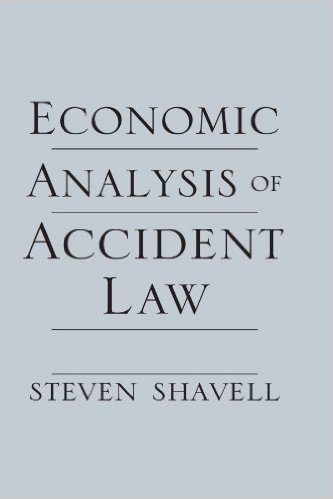
Shavell, Steven, Economic Analysis of Accident Law: Harvard University Press, 1987.
Accident law, if properly designed, is capable of reducing the incidence of mishaps by making people act more cautiously. Scholarly writing on this branch of law traditionally has been concerned with examining the law for consistency with felt notions of right and duty. Since the 1960s, however, a group of legal scholars and economists have focused on identifying the effects of accident law on people's behavior.
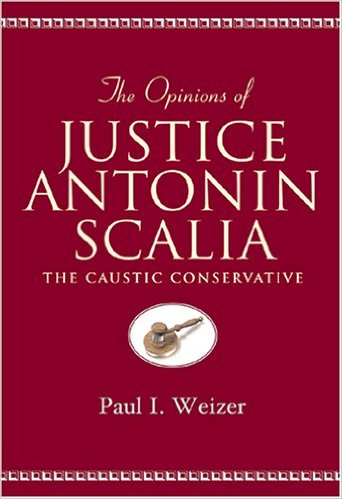
Weizer, Paul I., The Opinions of Justice Antonin Scalia: The Caustic Conservative (Teaching Texts in Law and Politics, V. 13), New York: Peter Lang Publishing, 2004.
Whether a reader agrees or disagrees with the points that Scalia seeks to make through these opinions, they are not boring. The layperson as well as the student of government, political science, and law will find the words of Justice Scalia well worth reading.
Law Review Articles
Guido Calabresi and Douglas Melamed, Property Rules, Liability Rules, and Inalienability: One View of the Cathedral, 85 Harvard Law Review 1089 (1972). This landmark article discusses three types of legal rules-identified in the title-that can be used by a society to protect rights ("entitlements"). It asks (and answers) why a society would
ever choose a liability rule (i.e., tort law) rather than a property rule to allocate resources. (Hint: The answer has to do with the concept of "market failure.") The article also contains a
good explanation of the Coase Theorem and of Calabresi's views on the role of transactions costs in economic efficiency analysis (as set out more fully in his The Costs of Accidents
(1970). The article concludes by applying the three-rule framework to pollution control and criminal law.
Richard A. Epstein, The Path to The T.J. Hooper: The Theory and History of Custom in the Law of Tort, 21 J. Legal Stud. 1 (1992). Examines Learned Hand's famous admiralty decision, The T.J. Hooper, and its importance to all areas of tort law-from malpractice to products liability. Professor Epstein argues that industry custom should be much more respected by courts, because that custom is implicitly incorporated into consensual agreements between market participants. Ignoring industry custom, according to Epstein, results in inefficient recoveries by plaintiffs who have knowingly assumed the risk of their injuries.
Richard A. Epstein, The Unintended Revolution in Product Liability Law, 10 Cardozo L. Rev. 2193 (1989). An excellent historical account of the rise of strict product liability law and an accessible explanation of the anti-contractual, economically inefficient effects of modern products law. Epstein also discusses the prospects for legislative reform of products law, concluding that the future appears dim for product manufacturers and consumers alike.
Richard A. Epstein, Causation and Corrective Justice: A Reply to Two Critics, 8 J. Legal Stud. 477 (1979). Professor Epstein explains his theory of tort liability ("corrective justice") and addresses criticisms of that theory. He engages in a detailed discussion of the causation element present
in alltort theories.
H.E. Frech III, State-Dependent Utility and the Tort System as Insurance: Strict Liability versus Negligence, 14 Int'l Rev. L. & Econ. 261 (1994).
Explores the "insurance" function of strict products liability, and concludes that using tort liability as insurance is economically inefficient, because it ignores consumer preferences and forces overinsurance. Professor Frech concludes that a negligence standard would be a better solution, if not a perfect one.
Michael D. Green, The Schizophrenia of Risk-Benefit Analysis in Design Defect Litigation, 48 Vand. L. Rev. 609 (1995). After surveying the development of strict products liability law in the past few decades, this article turns to a thorough discussion of the "risk/utility" test frequently used in design defect
cases. Professor Green presents two versions of the risk/utility test: the rigorous economics-based approach and the looser, "reasonableness" approach. Green carefully explains the
benefits and problems associated with the economic approach, concluding that it is the superior one.
James A. Henderson, Jr. & Aaron D. Twerski, Doctrinal Collapse in Products Liability: The Empty Shell of Failure to Warn, 65 N.Y.U. L. Rev. 265 (1990).
Explores what the authors call the "lawless discretion" given to juries in failure-to-warn products cases. The authors discuss several inherent problems with failure-to-warn cases, not the least of which is establishing causation. The authors then call for reform of the failure-to-warn jurisprudence, to place some measure of control on failure-to-warn cases and
to give manufacturers some guidance in product labeling.
Michael I. Krauss, Tort Law and Private Ordering, 35 St. Louis U. L.J. 623 (1991). >
A searching examination of the common-law moral foundations of both contract and tort law which explains why both are vital in a free society. After identifying the property-rights
justifications for both forms of law, Professor Krauss proceeds to explain how contemporary tort law has abandoned its moral underpinnings by attenuating the requirements of legal
fault and true proximate causation. The result, argues Krauss, is a legal system that eschews the traditional function of tort law (compensating the victim of another's morally culpable
behavior) in favor of a system that serves as a tool for social engineering and redistribution of wealth. Modern American tort law prohibits parties from voluntarily assuming risks ex ante,
instead always allocating the risk to one party. Krauss concludes that this coerced "insurance" against injuries is both economically stifling and morally vacuous.
George L. Priest, Lawyers, Liability, and Law Reform: Effects on American Economic Growth and Trade Competitiveness, 71 Den. U.L. Rev. 115 (1993). Analyzes the impact of tort law on the American economy, and offers three specific suggestions for tort reform that will promote economic growth and U.S. trade competitiveness.
George L. Priest, The Current Insurance Crisis and Modern Tort Law, 96 Yale L.J. 1521 (1987). Argues that the mid-1980s upheaval in the insurance markets was largely the result of "judicial compulsion of greater and greater levels of provider third-party insurance for victims."
This trend, by "systematically undermin[ing] insurance markets" has the following paradoxical effect: "continued expansion of tort liability on insurance grounds leads to a reduction in
total insurance coverage available to the society, rather than to an increase." In addition, "the parties most drastically affected . . . are the low-income and the poor, exactly the parties
that courts had hoped most to aid" in expanding tort liability. For a broader historical and philosophical perspective see George L. Priest & David G. Owen, "The Invention of Enterprise
Liability: A Critical History of the Intellectual Foundations of Modern Tort Law," 14 J. Legal Stud. 461 (1985).
Gary T. Schwartz, The Ethics and the Economics of Tort Liability Insurance, 75 Cornell L. Rev. 313 (1990). Examines the issue of whether tort liability insurance promotes or frustrates the goals of tort law. Professor Schwartz examines three possible goals of tort law, and discusses the effects of insurance on these ethical and economic goals. He concludes that insurance may or may not be economically efficient, but that its availability is justified because it furthers the most
important goal of tort law: victim compensation. Schwartz argues that insurance allows an injured victim to receive more compensation for his injuries than the defendant could provide,
and that premiums responsive to risky behavior also serve tort law's deterrence rationale.
Edward J. McCaffrey, Daniel J. Kahneman & Matthew L. Spitzer, Framing the Jury: Cognitive Perspectives on Pain and Suffering Awards, 81 Va. L. Rev. 1341 (1995).
An empirical and experimental investigation of how juries approach the compensation decision in tort lawsuits. "Does it matter whether juries are made to view the situation of a plaintiff in a personal injury action from an ex ante or an ex post perspective, relative to the injury? Do juries conceptualize the loss of free will associated with being injured as part of the damages? How do actual jury instructions account for the inevitable choice of perspective in these matters?" The authors' basic conclusion is that "framing effects do indeed have large impacts
on non-pecuniary damage awards." For example, "[a]n ex ante/selling price perspective at least doubles awards compared to an ex post/making whole baseline."
Andrew Cook, Emily Kelchen, State Court Challenges to Legislatively Enacted Tort Reforms, The Federalist Society. September 28, 2011 Over the past three decades, proponents of civil liability reform have made significant gains.1Propelled by significant electoral gains in the 2010 cycle, it appears that the trend will
continue this year, with 21 states so far enacting civil liability legislation.